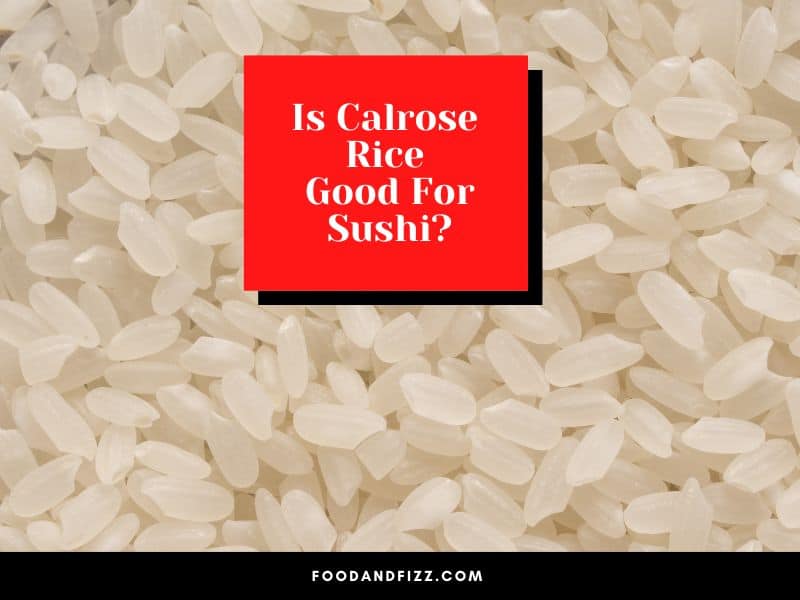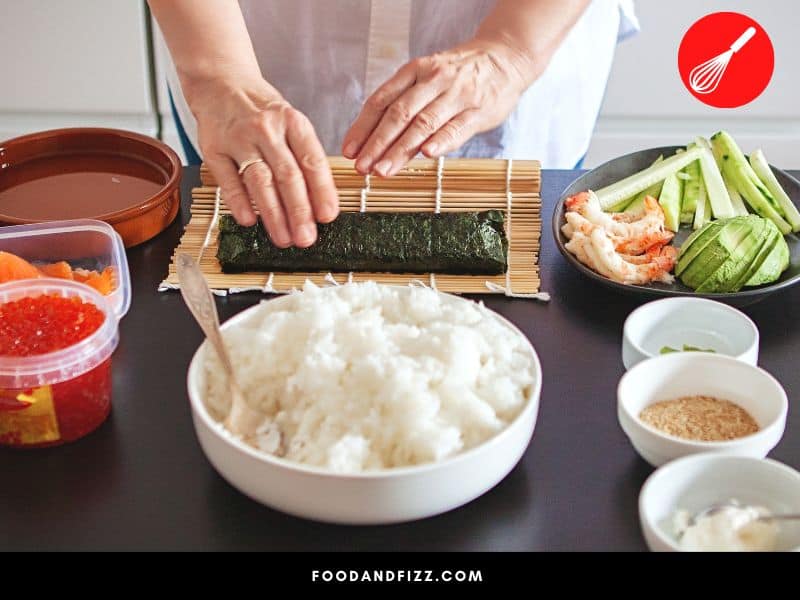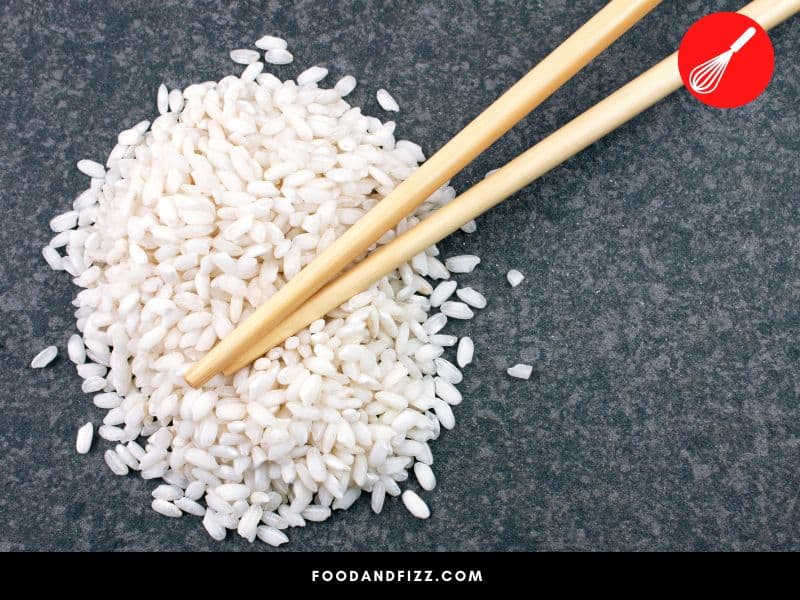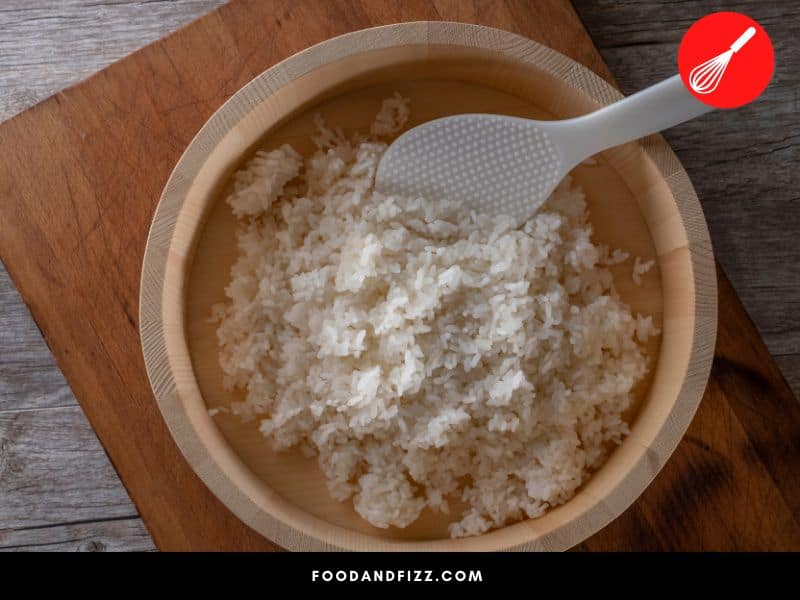Making your dishes taste as authentic as possible can be a bit challenging if you can’t find the exact ingredients in the original recipe.
Luckily, cooking is as much of an art as it is a science, and ingredient substitutes are often possible. They may alter your dish a little bit, but they often do not take away from the original intent of the dish.
Sushi is one of those things that has been adapted and modified to suit various tastes and preferences all over the world.
Most of us would love to make a good, authentic sushi but not everyone has access to Japanese sushi rice. So what can we do if we can’t find it? Substitute of course!
There are many rice varieties out there but not all would make good sushi rice. One candidate, Calrose rice, comes to mind.
A medium grain rice variety that becomes quite sticky when cooked, is Calrose rice a good candidate for sushi rice?
Is Calrose rice good for sushi?
Is Calrose Rice Good For Sushi?
Calrose rice is good for sushi, and can be used in place of traditional sushi rice. When Calrose rice is cooked, it becomes soft and sticky, similar to traditional sushi rice. It also has a mild flavor and can hold up its shape, making it a great alternative for Japanese rice in sushi.

What Is Calrose Rice?
Calrose rice is a type of medium grain rice that is known as the variety that started the rice industry in California. It was created in the 1940s, at a place called Rice Experiment Station in California.
Its name bears its characteristics, as well as where it was created. “Cal” is an ode to California, where it originated from, and where it is mostly produced. “Rose” pertains to its medium grain shape and was chosen as part of a naming tradition.
Calrose rice is a very popular type of rice and makes up 80% of California’s rice crops.

What Is Sushi Rice?
Sushi rice, in Japan, is made with a rice variety known as uruchimai. It is a type of short grain rice that is typically used in many everyday dishes in Japan.
When cooked, it becomes sticky in texture, making it ideal to be eaten with chopsticks. It is also the rice variety used to produce sake and to make rice vinegar.
Uruchimai is considered ordinary, everyday rice in Japan, and is used for a variety of rice dishes.
While uruchimai rice is on the sticky side (as with most Japanese rice varieties), it is not the same as sticky or glutinous rice (known as “sweet rice”).
Japanese rice varieties tend to be starchier (and therefore stickier) and tend to have a higher moisture content than other types of rice which is what gives most Japanese dishes their characteristic taste and texture.
When this “everyday rice” is flavored with salt, sugar, vinegar, and other seasonings, it becomes “sushi rice” or sumeshi.
It has a very different consistency from typical white rice. To know more, check out Sushi Rice vs White Rice – The 4 Most Important Differences.

Can Calrose Rice Be Used To Make Sushi?
Calrose rice has a mild flavor, which makes it ideal for use in dishes that make use of herbs and spices as it absorbs flavors really well.
When cooked, it also becomes sticky and glutinous, which makes it ideal for use in sushi and other dishes where rice texture is important.
When used in sushi, its mild flavor serves as a good backdrop for other more prominent ingredients to shine.
So yes, Calrose rice is one of the best, easily obtainable substitutes for sushi rice. While it may not be exactly the same as the rice used for making sushi rice, its moist and sticky texture allows it to be used in pretty much the same way as traditional sushi rice.

What is the Difference Between Calrose Rice and Sushi Rice?
Calrose is similar and can be used in place of sushi rice, but they are not exactly the same. In this section, we’ll explore some of their differences and similarities.
1. Grain Type
Calrose rice is a medium grain rice variety, while sushi rice, or uruchimai, is of the short grain variety.
Short grain rice varieties like uruchimai tend to be starchier than their longer grain counterparts and make them ideal for use in dishes where the rice needs to clump together in some way, such as sushi. Uruchimai, while sticky when cooked, is distinct and different from glutinous rice.
Medium grain rice varieties like Calrose rice are somewhere in the middle, which means they have properties similar to short grain rice varieties and long grain rice varieties, making them versatile.
Calrose rice has some starchiness to it that allows it to be somewhat sticky after cooking, making it a good substitute in making sushi rice.
2. Origin
Calrose rice is mainly cultivated in California, but can also be grown in places with similar growing conditions, like Australia. Uruchimai is cultivated in Japan. Outside Japan, it is often labeled plainly as sushi rice.
3. Consistency
When uncooked, uruchimai rice looks like short, translucent grains. When cooked, they become soft, fluffy, and sticky, which is what allows them to be shaped into balls or logs for sushi and is what allows them to hold their shape to be picked up easily with chopsticks.
Calrose rice, when cooked, has a similar consistency, too, although not exactly the same. Because it is a medium grain variety of rice, it has a higher starch content than long grain rice varieties, and therefore would have the necessary stickiness for it to be effectively used for sushi.
4. Uses
Calrose rice is versatile and works well in many different dishes. Because it is midway between short grain and long grain rice, it can be easily substituted for recipes using either, with slight variations.
It can be used for sushi rice and can also be used for pilafs, soups, and salads. Uruchimai, on the other hand, can be used for everyday rice dishes.
When it is flavored and seasoned for sushi and becomes sushi rice (sumeshi), it can only be typically used for sushi.
How Is Sushi Rice Made?
To make sushi rice , a Japanese short grain rice variety called uruchimai is steamed and cooked. While it is still hot and piping, it is then seasoned with a mixture of vinegar, salt and sugar.
This seasoning is what gives it its characteristic slightly tart taste. An easy-to-follow recipe for sushi rice can be found here.
Tips to Make Good Sushi Rice
Whether you are using Japanese uruchimai rice or Calrose rice in making your sushi, there are important tips you can remember to make sure that you are making your sushi rice in the best way possible.
1. Choose the Right Type of Rice
Sushi rice is typically made with uruchimai, a short grain Japanese rice variety that is naturally sticky when cooked.
If you cannot find uruchimai, you may Calrose rice or something similar, since it also has the required softness and stickiness to make good sushi rice. It will not be exactly the same but it will be close enough.
Long grain varieties like Jasmine or Basmati will not work well for sushi, as they will not cook up to the right texture.
2. Rinse and Soak Rice Prior to Cooking
Both types of rice, for it to cook evenly, are ideally washed until the water runs clear so that the extra starch is removed.
After washing, rice is also ideally soaked prior to cooking so that it will absorb its own weight in water to the inner grain, and cook evenly. Not rinsing will cause your rice to be extra gummy, and not soaking may cause your rice to be unevenly cooked.
3. Add Slightly Less Water Than Called For
In making rice for sushi, it is important to add slightly less water than called for in cooking. The reason for this is because at the end of cooking, sushi rice is seasoned with salt, vinegar, and sugar, so more liquid will be added. Adding slightly less water will ensure that your rice will not become too mushy.
4. Add the Seasoned Vinegar to Hot Rice
After the rice is cooked, transfer it to a big bowl or a baking tray, add your seasoned vinegar to the hot rice, and immediately mix and cool.
Do not wait until the rice is warm or cold. Doing this will cause it to get mushy and clumpy. If you want your sushi rice to become shiny, do this step immediately.

5. When Mixing the Seasonings, Use A Cutting and Folding Motion
When mixing the seasoned vinegar into the rice, do not straight up mix it as you can crush the rice and can make it turn into a big pile of goo.
Use a cutting and folding motion to mix the seasoned vinegar in so the grains remain intact. Good sushi rice is not gummy, but should still have enough of a bite and texture.
Making sushi rice is not difficult, but it does require the proper execution of those simple steps to achieve the perfect texture.
Whether you are using authentic Japanese short-grain rice or using a substitute such as Calrose rice, how you cook and prepare the rice will play a huge role in whether your sushi-making endeavors will be successful.
Read next: How Long Sushi Rice is Good For
Frequently Asked Questions to Is Calrose Rice Good For Sushi?
What Rice Should I Use for Sushi?
Sushi rice is made with a Japanese short grain rice variety called uruchimai. It is typically labelled “sushi rice” outside of Japan. If you cannot find it, short or medium grain varieties like Calrose rice are good substitutes. Long grain varieties like Jasmine and Basmati are not starchy enough to work.
Is Calrose Rice Glutinous Rice?
Calrose rice is sticky and moist when cooked. However, it is different from glutinous or sticky rice.
What is Calrose Rice?
Calrose rice is a type of rice with a medium grain. It was created in California and mostly produced there. It has a fluffy, moist and slightly sticky texture when cooked, making it a good option for sushi rice.
Conclusion to Is Calrose Rice Good For Sushi?
Calrose rice is one of the most popular and widely accepted substitutes for Japanese short-grain rice in making sushi.
Because of its mild flavor and moist and sticky texture, it holds up well to shaping and provides a similar texture to the rice variety that is typically used for making sushi.
While the substitution is not exact, it will still give your sushi a delicious and appealing texture that rivals the original one.

